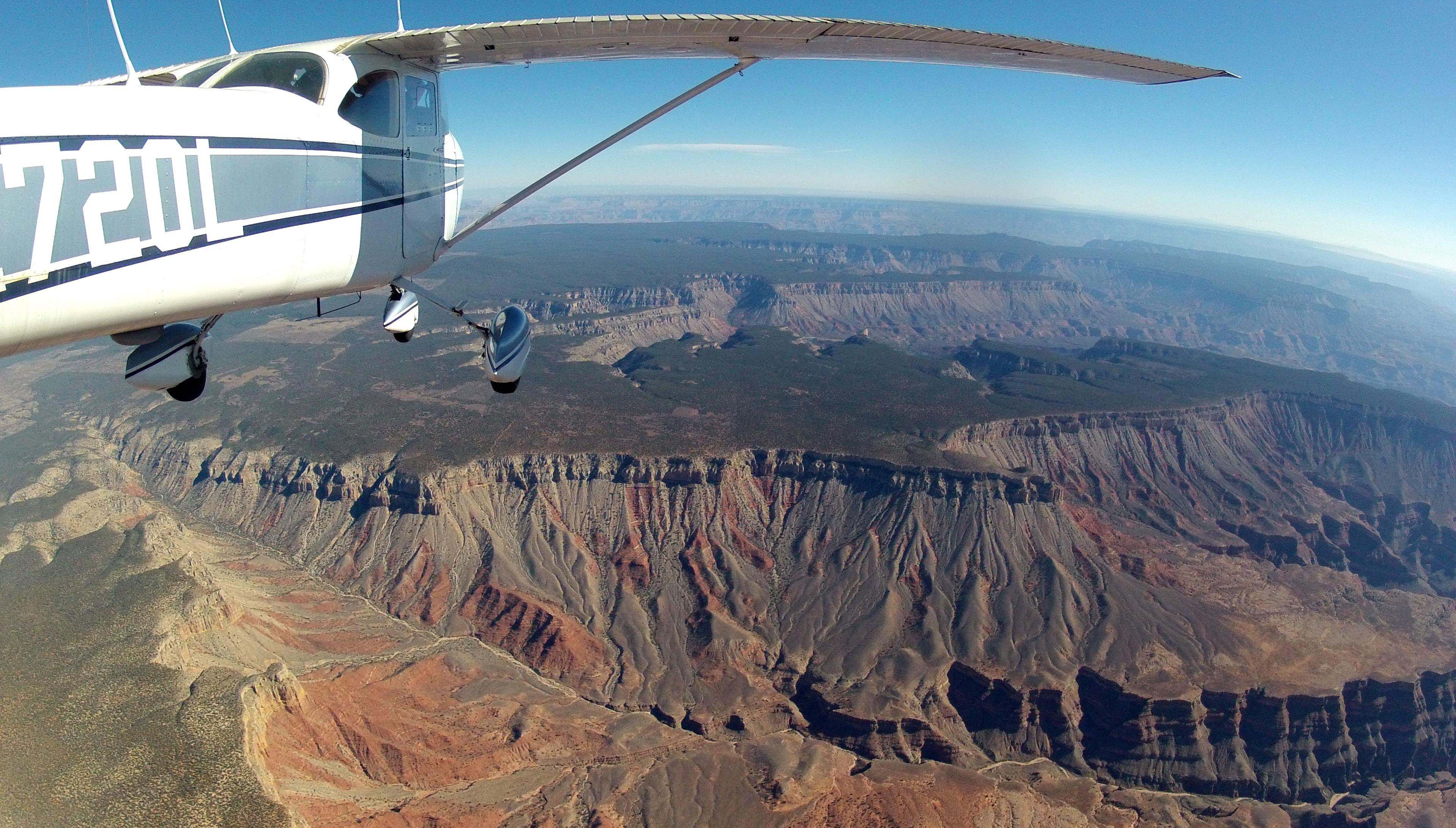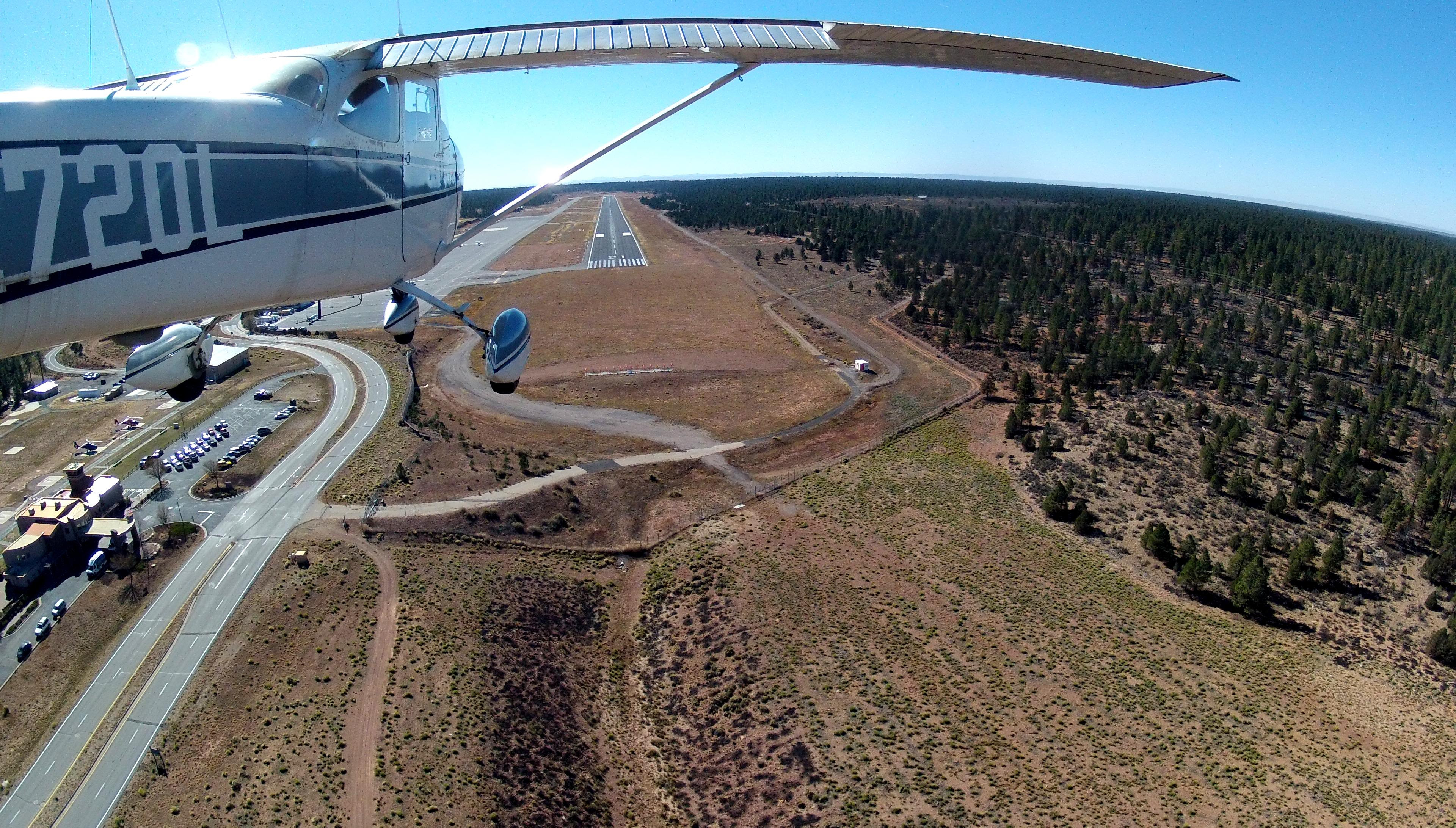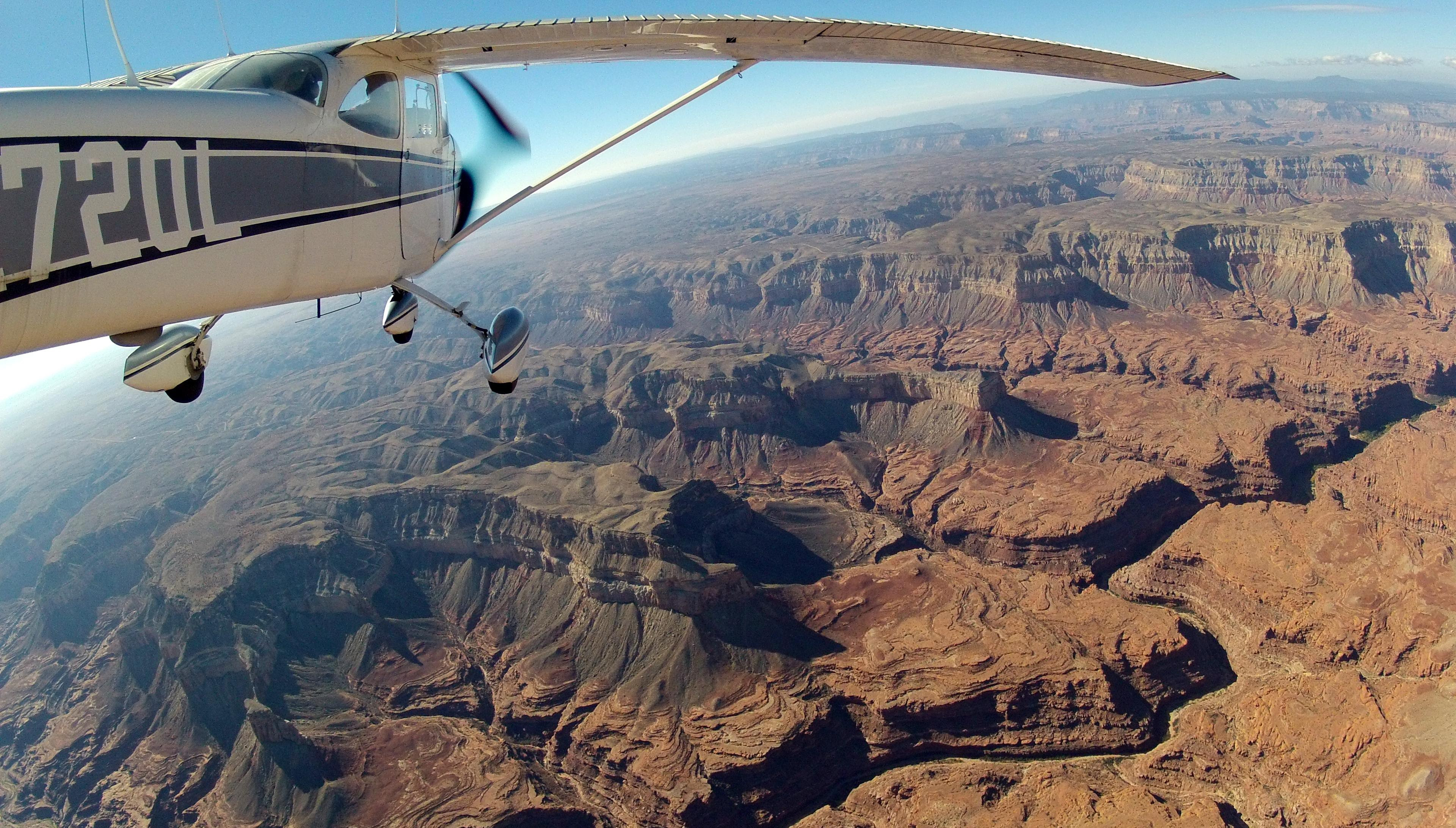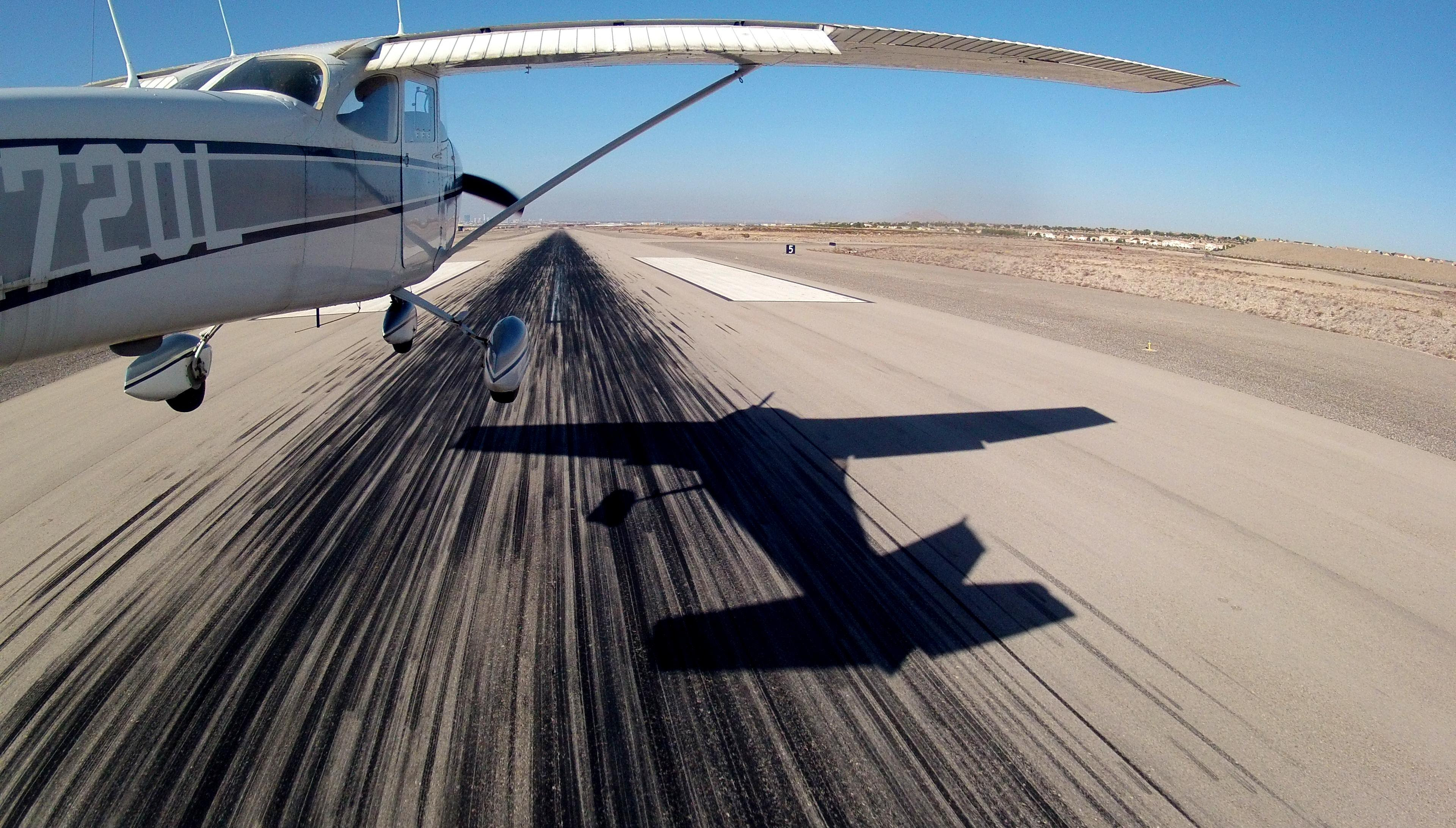This is not an all-inclusive list, and I highly recommend also reading / watching some other guides. Above all else, be safe and be mindful of where you fly. Don't fly over unwitting crowds or people, over other people's property without their permission, or any place that might pose a hazard to aircraft, automobiles, or people.
I highly recommend learning to fly with an inexpensive "nano" quadcopter such as the Blade Nano QX or the Hubsan X4 (Amazon). If your first quad is a DJI Phantom 2 or something of similar size and weight, please consider buying an inexpensive nano quad like the ones mentioned here and learning on that first. There are a few reasons for this:
- You will crash. Crashing a $60 quad is a lot easier to deal with than crashing a $600+ quad.
- Small, lightweight nano quads survive lots of crashes. 330mm, 450mm, and larger quads almost never survive a crash without some damage.
- Small, lightweight nano quads don't hurt when they hit people, animals, or things. Larger quads can.
- Small, lightweight quads require you to learn flying and orientation skills that are necessary to fly larger quads. Larger quads are more stable and have more advanced features, which can dangerously mask your lack of skill until it's too late. By learning on the smaller, more agile, less advanced quads you are actually becoming a competent enough pilot to handle the larger ones.
{end rant}
Basics
(Mostly applies to inexpensive mini / micro quads, aerobatic quads, and non-DJI products):Always power on the quad with it sitting still and level. All quads need a few seconds sitting level to calibrate the MEMS gyro / accelerometer each time they power on. If you apply throttle and the quad tries to go off in one direction violently: Land, unplug the power, plug it back in and let it sit level for 10 seconds again.
Keep the "trim" settings on your controller centered. If the quad "drifts", it's not because your trim is wrong. That's not how quads work. There's something else going on.
Speaking of hovering: "Level" flight and "stationary" flight are not the same thing. Most quads have an auto-level mode. This does not mean they will hover in a stationary point without assistance. In fact, almost no quad will do that. (Certainly no nano quads will.) When you see a quad hovering in place and not drifting in any direction, there's a pilot who's moving the controls fairly constantly to correct for drift. That is normal. It actually takes a fair amount of practice. (When you see a quad hovering in place, do a flip, and then continuing to hover in that same place, you're looking at a pilot who's had hours of practice doing that. cough, cough.)
LiPo batteries:
Once you get a feel for how long the battery lasts, try and stop flying at about 80% drain instead of 100% (e.g. when the copter gets weak instead of when it just won't fly anymore.) This will more than double the lifetime of your batteries.
If you can, resist the temptation to immediately put the battery on the charger after you've drained it. (That also shortens the life of the battery.) Let it "rest" for a while before charging it again. 15 minutes is probably long enough for those little 1S batteries. 30-60m is more appropriate when you move up to larger quads with 3S & 4S batteries.
Yes, given the above two points you'll definitely want some more batteries.
Here's a good LiPo battery guide, if you're interested in knowing more about them.
Throttle & Orientation
The hardest skill to master when learning to fly a quadcopter is maintaining orientation. The second hardest skill is controlling throttle while you're also controlling other maneuvers. (This is why early on you always either suddenly hit the ceiling or the floor when you're surprised.)Fly it "tail in" (tail facing towards you) for a while until you get comfortable with maintaining a stable altitude throughout. Tail in is the easiest way to fly, because you and the quad are facing the same direction. In this orientation, the controls are natural feeling. For a while, it will feel like that's the only way you can fly, and if the quad gets yawed (rotated around the Z axis) more than 50° to either side you'll quickly lose control. Patience!
Once you've mastered "tail in" flying and start to get bored with it, it's time to learn to fly at different orientations! (I don't recommend trying this before you have some experience and don't have to think about the throttle controls anymore. Stick to "tail in" flying until you're comfortable.)
Here's what worked for me when learning orientation:
Left / Right Passes:
Start with the quad in front of you and facing to your left. (Its left side is towards you.) Take off. Practice hovering. Remember that LEFT is towards you and RIGHT is away from you. Make a 180 turn by yawing to the right. Now it's facing right and the RIGHT side is towards you. Practice hovering like that. Repeat until you can make the turns and then maintain control without having to think about it so much.Once you get that down, do the same thing but have the quad move forward before the 180° turn. Fly it by you with the LEFT side towards you, have it turn 180°, then fly it back by you with the RIGHT side towards you, turn 180°, &etc.
Boxes
Once those maneuvers seem easy, add a straight out leg and straight in leg to each side so you're actually flying a large square in front of you (with the quad always flying forward.) Remember that on the "inbound" leg the quad is facing you so left and right will seem reversed. The same is true for the Left/Right passes though, so you should already start to have a feel for that.Figure Eights
Now, try flying a figure eight in front of you. (With the quad flying forward throughout the maneuver.) If you can do it, congratulations. You have a solid handle on flying in all orientations.Completing all of the above comfortably took me months. Feel free not to tackle any of it for a while. ;)
Outdoor flying
It's inevitable. You've been flying indoors a while, and you're tired of hitting walls and ceilings. So you think "It's nice out, let's go OUTSIDE!" DANGER WILL ROBINSON.These things are incredibly small, incredibly fast, and there is no documented service ceiling. They're often capable of flying higher than you can see them at!
You will lose control of the quadcopter. How you fly and how you react when things go wrong are the difference between having to repair the quad or having to spend two hours in vein looking for it, giving up, and then sheepishly buying a new one. I have lost three quadcopters so far. Lost ... as in, they flew away and I never found them again. It's easier to do than you think. Here's some advice to try and prevent that.
- Get low. Don't fly above rooftops, treetops, or other nearby obstacles. (Certainly not if you haven't mastered ALL of the orientation lessons above.) A funny thing happens five feet above the immediate obstacle line: WIND. There's probably a steady breeze 20 feet up that doesn't exist at ground level. A steady breeze can carry your nano quad away faster than you can bring it back to you. The turbulence between the ground level and that steady breeze can also cause your quad to make unexpected turns, which can throw off your orientation.
- Be willing to DROP. At some point you will find yourself higher and/or farther away than you intended. Your instincts will be to add throttle and fly it back. BE WILLING TO ABORT and just cut throttle and let it crash. It's better to have to repair a quad than to not know where it ended up.
Flyaway Recovery
This is by far one of the hardest skills in outdoor quadcopter flying, so it's going to get the longest treatment. I don't think this applies as much to other R/C aircraft, because most R/C aircraft won't keep flying if you become disoriented to begin with. They just crash. But many quads will obediently keep themselves level and in the air even if you and the quad are on completely different pages about which way it's facing and/or moving... and this is how quads get lost.In my (contentious) opinion you should master flyaway recovery with nano quads before you ever fly anything larger. Dropping a nano quad over the visible horizon is annoying, and possibly a slightly expensive ($100) lesson. Dropping a 4+ pound quadcopter with a 3S lipo battery over the visible horizon could cause serious injury or property damage. Better to learn the safe and cheap(er) way!
The set-up is this:
You're flying outdoors, a little higher than you're used to, maybe doing some fast maneuvers or trying something new, when suddenly you realize the quad is doing something other than you expect. It takes a few seconds to register this discord in your head and by the time you do the quad is a hard to see speck over the top of your neighboring horizon / obstacles. E.g.: It's either over and beyond a nearby treeline or rooftop. You're scared to cut throttle, because you don't actually know where it will come down. To not lose sight, you've had to add power, so it's now higher up (and further away). What do you do?!?!
This is a terrifying situation. Here's the reality: Without experience, you are about to lose your quad and there's probably nothing you can do about it. If it were a larger, advanced aircraft this is where many hit the "Return To Home" switch and pray. (Whether that's the Right Thing To Do™ is a subject for another day.) If it's a nano quad you really only have two options: A: Try and regain orientation at the risk of it going even further away, or B: Just give up, cut the throttle, and go searching for it.
Everyone tries option A first. Sometimes for too long. Two of my three aforementioned lost quads were this exact situation. I fought and fought to get it back and eventually watched in vein as it disappeared and was just.... gone. (The third was actually an equipment malfunction that I couldn't do anything about.)
When this happens to you (cough, cough) my one remaining piece of advice is this: DON'T TURN OFF THE TRANSMITTER. Pull the throttle to idle, run to wherever you think it may have came down. Stand still for a second, take in the surroundings, then "goose" the throttle a few times and listen. You may be able to hear it whining and trying to spin up the motors. This may be how you locate it. If not, well, how long you spend looking (and to what extent) is between you and your deity of choice. Good luck. :-P One hint, though, NANO QUADS are never as far away as they look. In fact, it's probably only half the distance away that you think it is, so start there.
Lost Orientation Recovery During a Flyaway
Let's go back to the point just before you lost it. You can see it, it's a speck on the horizon, and you don't know which way its facing.Here's what you do:
Regardless of orientation:
- Calm down. You're going to panic. Try not to "panic fly" though.
- Avoid any YAW inputs. (It will only make things worse)
- Avoid abrupt control inputs. You can lose control easily.
- Avoid full deflection of the controls. (Don't push any sticks all the way to the edge!)
- Turn on auto-level (if it's not on already.)
- Very gingerly try "LEFT ROLL" first. Try moving it left for a second or two.
- If it moves LEFT: Center the stick, pitch it back gingerly and hold it and just patiently wait.
- If it moves RIGHT: okay, it's actually facing you. pitch it forward gingerly and hold it, and just patiently wait.
- Very gingerly try to PITCH FORWARD first, for a second or two.
- If it moves LEFT: It's facing left. Center the stick, roll it left gingerly, hold it, and just patiently wait.
- If it moves RIGHT: It's facing right. Center the stick, roll it right gingerly, hold it, and just patiently wait.
This is the most dangerous situation, because your attempt to determine orientation might actually send it out of sight. The good (?) news is, there's only a 1:4 chance that a direction you pick will be directly away from you. So ask yourself, do you feel lucky, punk?
Pick one of the above and try it. If you've already tried LEFT, then try FORWARD (or vice versa). I like to try "LEFT ROLL" first but that's just me. The main point is be deliberate and methodical in your attempts, don't just haphazardly try things. Try LEFT ROLL for a couple of seconds and if it doesn't move LEFT or RIGHT clearly, then counter with the same amount of RIGHT ROLL for just a second to freeze it and then move on to trying PITCH FORWARD instead. If you're slow and deliberate you, with practice, will be able to determine which side is facing you.
In all of the above situations:
Once you figure out which side is towards you:
- Go ahead and bring it directly towards you by pitching / rolling it towards you. Do not attempt to "turn" or yaw it back into a more comfortable orientation. You might under/overshoot the turn and then you'll have to start all over again.
- Be patient. You're panicked, your heart is racing, and "time dilation" is in full effect. Resist the temptation to yank the controls, and be willing to trust that the quad is coming towards you based on a small (25%?) control input even though you won't be able to tell for the first several seconds. If you direct it towards you and nothing seems to happen, then IT'S PROBABLY WORKING. Just hold it and count to five and you should suddenly see that it's getting bigger as it comes home. This is the most satisfying feeling in the world, btw.
- Once you get it back: Land, sit down, breathe. You're more panicked than you realize. Losing control of a flying thing and then regaining it is a lot more mentally taxing than you imagine, and you probably need a minute to collect yourself.
Happy flying!



















